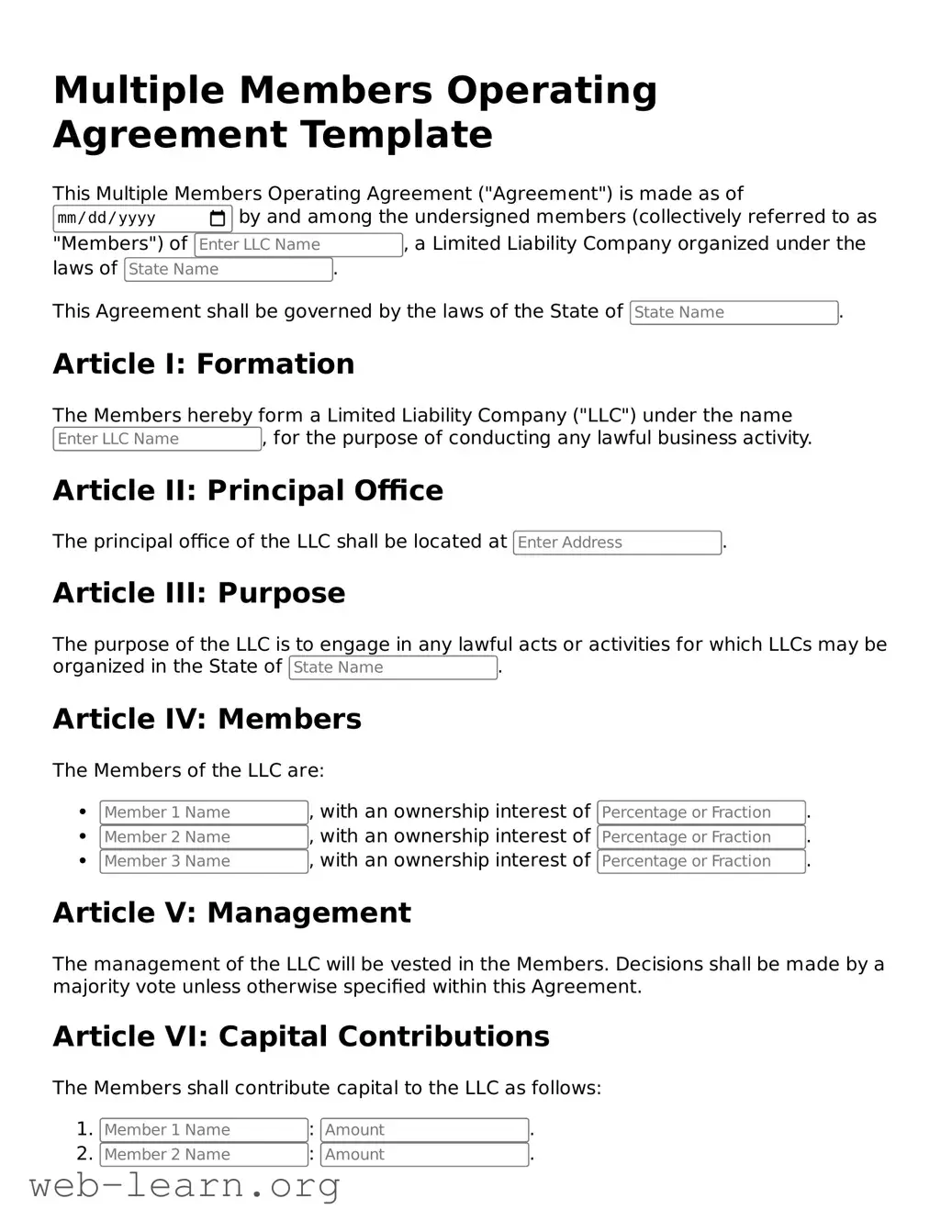Attorney-Approved Multiple Members Operating Agreement Template
A Multiple Members Operating Agreement is a legal document that outlines the management structure and operational procedures for a limited liability company (LLC) with multiple members. This agreement serves as a foundational guideline, defining each member's roles, rights, and responsibilities. Properly drafting this document is essential for ensuring clarity and preventing disputes among members.
